This essay was translated into English by Maryam Iraj as part of MULOSIGE’s Translations project. This project includes translations of essays of world literature from Urdu to English, as well as an our archive of translated Progressive and Modernist Urdu Poetry.
Nazrul Islam. Source: Wikimedia Commons.
The Rebel Poet of Bengal: Nazrul Islam
“Bengāl ka bāghi shā’ir: Nazrul Islam”
from Adab aur Inquilab (Literature and Revolution)
by Akhtar Hussain Raipuri (1912-1992)
Translated into English by Maryam Iraj
To find the original essay in Urdu, please turn to pages 201-232 here.
___
In the history of modern India, a new era started after the great world war. National movements which had been gathering across India in their respective capacities now culminated into a vast and deep ocean to move forward with their ultimate destination.
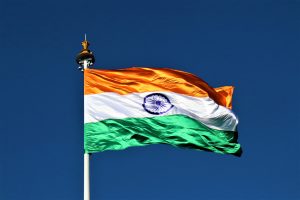
Photo by AKSHAT GUPTA on Unsplash
Nationality transpires into a philosophy for a large group of society, and even starts affecting those areas of life which remain unaroused by the, apparently, materialistic movements. Emerging trends in Indian fine art and music is the reflection of this wave.
The cultural mold of our nationality was formed in Bengal. The first reformer of modern India, Raja Ram Mohan Rai, was born there. Western branches of knowledge and art became famous there for the first time. And following 1957, an active discourse was developed for social and political reforms. It will be surprising for those who studied the reformation movement that more than the spatial and temporal realities, it was contingent on the intellectual human struggle to push forward the resistance. Despite the distance of thousands of miles and a gap expanding over centuries, evolutionary style works the same way in two strikingly different scenarios: Bengal revolution and European renaissance. Socio-economic reasons yielded the renaissance movement in Europe centuries ago, and Bengal movement was also initiated for the same reasons except for the fact that two different civilization existed side by side here: Hindu and Muslims, and was also faced by foreign imperialism. The way national movement of Bengal wanted to resolve this three-dimensional issue can be understood through the Binkam Chatterji’s novels. These novels did not ratify the singular nationality of India rather they exuded aversion for both Hindus and Muslims. However, Hindus were declared as the real successors of India, later on. This point of view persisted till the end of great world war, and the same ideology resonated not only in the constitutional discourse but in the “Joog Bani” [1], and in the revolutionary writings of all those as well who belonged to the Tilak [2] school of thought.
Alongside, humanitarian, esoteric and liberal ideas of Brahmo Samaj, Rama Krishan, Prem Hans, and Vivekananda also became famous. Unlike the despotic preaching, Vedandanta philosophy and Tilak’s translation of Geta strongly upheld and propagated the ideas of peace and self-determination. However, both these writers, Vivekananda and Bal Gangandhar Tilak, had a mutual objective to infuse a spirit in the centuries’ old Hindu civilization.
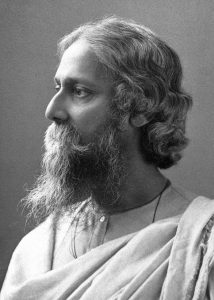
Rabindranath Tagore. Source: Wikimedia Commons
The existing age of Bengali literature is called the “Age of Tagore”. Tagore’s persona took Bengali literature to unprecedented heights of fame and international recognition. Though he left a deep mark on almost every aspect of Bengali literature, we shall focus solely on poetry here. Bengalis are called the Italians of the East. To a great extent, this rings true as love for songs and a romantic yearning is a common trait between the two. Intrinsically, both these nations are peaceful and fond of all those things begotten in summer or in rainy seasons. Their languages exude a sweet pleasantness along with a feminine touch to it. Literary trends are neither drawn to or from realism here but rather remain more focused on romanticism and abstraction. There is no denying to the fact the number in which Italy produced saints and Bengal produced Swamis and Sadhus [3] is unparallel.
Art of Tagore was not that he imparted a new luster to Bengal but he understood the true spirit of Bengal. He fine-tuned the already existing lyrical quality of Bengali language and incorporated its ambiance into his poetry. The mannerism in which he incorporated the Western and ancient Sanskrit poetic-meters into his works to create unique renditions affirms the position of his works among the world’s masterpieces. If we focus on the thematic structure of prose of Tagore other than his poetic prowess, we shall find the same dormancy and inactivity which we encounter into the works of Tolstoy and Gautam Buddha. Their aversion towards the injustices of the real world could not prompt them to come up with solutions for such social evils. It can be fairly said as to why a romantic soul should come up with a cure of such evils, but Tagore believed only in healing. What to talk of such an intellectual who leaves the future of his people to the sheer spiritual healing despite being in the full know of the depravity of the past and present of his society.
Non-cooperation movement of Bengal is the biggest hallmark of our history. Minor political maneuvers which were carried out in putting up this resistance will not be brought under discussion here but the discourse which led to the volcanic eruption of people who revered into century-old slumber to break away from the shackles of imperialism.
Those days shall never be erased from our memories—especially those poisoned with political turmoil. Leaving behind the Parsi theatre, Indra Sabha [4], or the folklore of Laila Manju [5], people started enchanting the songs of Swaraj [6] and Swades [7]. With Qawwalis [8] and Kirtans [9], Hindu Muslim unity was established. An army of poets stood against the mayhems of the government. And those who spent their lives in learning the craft of Ghazal [10] now emerged as the passionate warriors of the nation [11]. Bengal which was the birthplace of national movement was not the silent observer of this socio-political agitation. There is no one who is more nationalist than a Bengali. Their passion for the country is like stream which floods during the monsoon season and batters everything which comes in its way. It is not impossible to document all the movements which were started in that age of turmoil. This ebullience could have been transient but the essence which endured were absorbed into literary and artistic folds of Bengal, and survived to this date. How strange is the fact that time encapsulates the gigantic revolutions and turmoil into few idiomatic lines used to describe the mannerism in which material and non-material culture emancipates!
Nazrul Islam was the flag-bearer and founder of a new literary era.
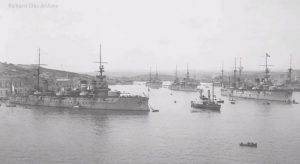
WW1 Warships. Source: Wikimedia Commons
It was the time of World War-1. The entire day battlefield of Iraq remained warm with blood and, finally, night approaches. A paralyzing silence and utter darkness prevail. In between, hovering aircrafts throw light on the ground to hunt the enemies. Suddenly, the air reverberates with sound of guns and bombs, and then silence resumes. Tired soldiers resigned to deep sleep in their trenches except for one.
The entire day he fought valiantly on the frontline checkpoints. And as the night approached, each and every joint of his battle-hardened body loosened. But why the sleep was still a far-flung dream for his enervated eyes? He did not seem to be in the know of this disquiet and angst. Simply unaware of this restlessness himself!
Confluence of Tigris and Euphrates river was flowing furiously in close proximity. And all that soldier, Nazrul Islam, could feel was that a river of emotions was flowing in his heart as well. And those overflowing emotions wanted to be transpired into words. He never practised poetry ever before, and neither knew the poetic rhythms, lyrics, or meters. Hence, it was the stage which we usually call Ilham [12] in the poetic tradition. He starts writing in darkness with his pencil on a blank paper. To his utter surprise and astonishment, he wakes up to a beautiful poem which he wrote last night—in utter darkness with his war-torn body. This was his first ever published poem, Shat al Arab.
Nazrul Islam hailed from a humble family background of a famer. He was born 46 years ago in a far-off village of Bardhhaman. Nature nurtured him and the blues of poverty raised him. He was not lucky enough to avail the luxury of going to school and colleges, and was inducted, at the age of 18, in the army and was positioned in Iraq. Hence, it was sound and fury of the battlefield which proved to be his alma mater for his future literary and musical exploits.
On his way back home being a head constable, a manuscript of poems was in his hands. Around this time, Caliphate and Non-Cooperation movements were initiated. Nazrul Islam realized that fire which he carried in his heart to his homeland from the battlefield had already started flaming the entire country. And it had already turned into a sacrificial house.
Unfortunately, we are still unaware of those reasons and impacts which radically transformed the ideas of Nazrul Islam, and he took to poetry to express those nationalist feelings. In responding to a query, he once replied, “why do you question the genesis of this raging storm?” However, we can get a fair idea of his trends and inclination from the poems which he penned down. His first collection of poetry was published with the title Agni Veena (The Fiery Lute) [13]. This collection is comprised of eight or nine poems. And except for two, all poems were written in Iraq. All these poems depicted the Islamic culture and civilization. We also find the glimpses of a revolutionary Muslim which was not rare in those days. And more than the freedom of India, they struggled for the freedom of Turkey and other Arab countries. Irrespective of its genesis, this is the poetic trend of resistance and struggle in which we find the true essence of his poetry. It was the struggle against the atrocities and a relentless desire for freedom which ignited his creative spirit.
If we consider his personal life, it will be evident that he was born to a Muslim farmer, and served as a soldier as well. And a farmer-soldier carry the splendid possibilities of revolutionizing his times contingent upon his active connection with reality. Farmer, labourer, and soldier—the unity of these three can overthrow the atrocious governments in no time. Fall of Tsars is the perfect example of this socio-political reality.
Nazrul Islam inherited the heated discourse of a Muslim, realism of a farmer, and the aggression of a soldier. Only the revolutionary nature of a labourer was missing which was, later on, established.
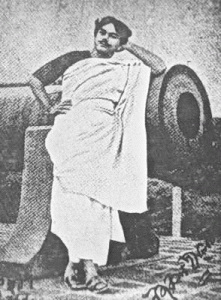
By Unknown author – Source:[1], Public Domain, https://commons.wikimedia.org/w/index.php?curid=92401830
Without exaggeration, it can be established that The Rebel is a unique poetic undertaking of our culture. Poets like Victor Hugo (The Storm Simile) [17], Swinburne (Hertha), or Lord Byron (The Destruction of Sennacherib [18]) also covered he same topic in their classic poems. Pushkin’s Ode to Liberty became the national anthem of the Russian revolutionaries. But the poem “The Rebel” remains unparallel and surpasses all other poems in its eminence and magnificence. It has a fervor of its own. Hidden in poetic variegated oeuvres, this fiery icon was bigoted. At this stage, when he wrote this classic, his views on life were not fully ripened as they later on surfaced in his collection of the poems: Nara e Inqilab [19]. However, such a deep intensity and a comprehensive sketch cannot be found anywhere else even in his own works.
Two poems, The Rebel and Arrival, capsized the literary circles of Bengal. For months these poems were appreciated in newspapers, and fundamentalists heavily criticized them. New meter and new themes of these poems were proclaiming a new era. Supporters of Tagore school of thought also forgot that, once, they also broke away from the literary conventions of Bankimchandra Chatterjee [20] and D. L. Roy [21]. This argument translated into the division of two literary circles: young and old, and at the helm of it the dynamic poetry of Nazrul Islam was the real cause of this division.
Literary offerings of Nazrul Islam is of immense value to Bangla literature. The prime gift was that message which he brought back from the battlefield. It was the message of those valiant soldiers who, in their struggle to rescue humanity, were sentenced on gallows, or were rotting away in dungeons in foreign lands. But, the poetic manner in which he communicated this message, was equally powerful. In literature and particularly, in poetry, methods and style of the poet or the author is of ultimate importance. And finest of the finest theme remains ineffective and emasculated if not delivered with the outstanding literary craft and style. Nazrul Islam learnt this secret and the garb of the words with which he adorned his themes was unique and par excellence. Bengali language exuding a feminine quality acted like a poison for penning down the war-poetry, however, worked perfectly for the peaceful and mild literary discourse of Tagore. But, as soon as the themes of realism and revolution were entertained, Bangla language lost its luster—the mold cracked with heat. At this point, Nazrul Islam’s knowledge of Persian language facilitated him which he mastered during his school days and kept practising it later on as well. Urdu language also enriched his poetry which he learnt in the bazars of Calcutta and in the battlefields. He blended literary words from Urdu and Persian into his works so that his discourse could be more forceful for his reader. Despite the fact that a majority of Muslims lived in Bengal; in conventional literary circles, it was a linguistic violation to amalgamate Persian or Urdu into Bangla. They were not entitled to borrow words from either Persian or Urdu in comparison with a Hindu who borrowed words from Sanskrit. But when Nazrul Islam broke away from the convention to borrow from Persian and Urdu, it was called sectarianism. Nevertheless, this new style became famous very fast and to write Ghazals with this particular linguistic blending became a publishing trend in Bangla.
Second major offering following this linguistic borrowing was the war music which rendered to make message more impactful. And the music which he learnt in his childhood helped him enormously.
An important point which calls forth our attention is the fact that those who transformed the face and essence of Indian poetry were also maestro-musicians. Tagore and Nazrul Islam in Bangla, and in Hindi, Pant [22] and Nirala [23] are such unique examples [24]. The absence of this acknowledgement of linguistic borrowing in Urdu is due to the fact that among Urdu literary circles the endorsement of music is nominal. Besides, in order to expand the range of the poetic meter in Urdu, Hindi music can also be instrumental but it is a dilemma yet to be resolved.
Peculiar characteristic of the thematic messages, innovation in literary and linguistic discourses, and the radiating prowess of his literary style—were the qualities which made Nazrul Islam a famous and a cherished Bengal poet at a very tender age.
————————————————————————-


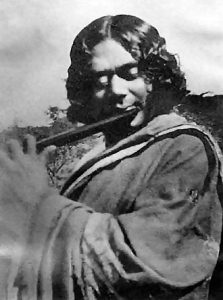
Leave A Comment